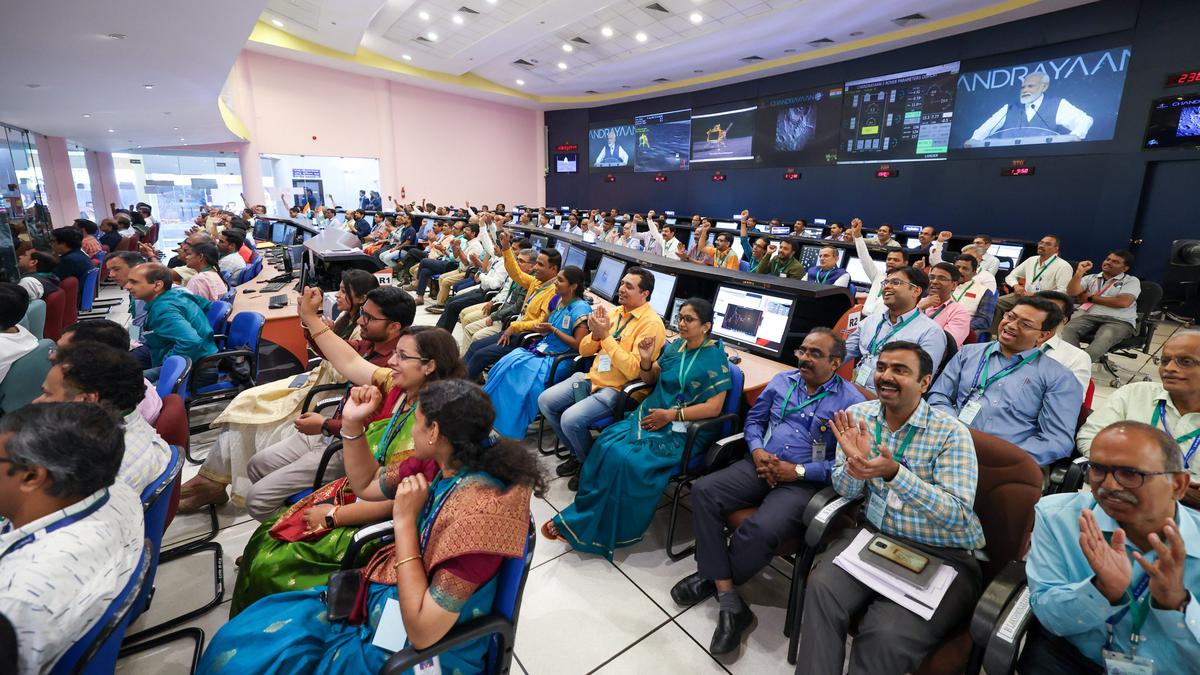
The sky is not the limit: probing the minds of scientists associated with ISRO Premium
The Hindu
Explore the stories of ISRO's scientists & their achievements: two new books, Rocketing Through the Skies & India Rising, tell of determination, hard work & unwavering passion that enabled ISRO to make rapid strides. Vikram Sarabhai: A Life, ISRO: A Personal History & My Odyssey offer insights into the man, the organization & its missions. ISRO's Magnificent Women & their Flying Machines celebrates the women scientists who defied gender barriers & achieved success.
India erupted in joy when the Chandrayaan-3 lander with a rover inside touched down on the moon last week, marking a moment in history. While space explorations evoke tremendous interest, there is also a curiosity to unravel the sharpest minds of physicists, scientists, engineers and astronauts, who make such impossible missions possible.
Two new books by scientists who gave their time and life to the Indian Space Research Organisation (ISRO) are the right place to understand what goes on behind the scenes at the eminent space agency. Rocketing Through the Skies: An Eventful Life at ISRO (Rupa) is the story of G. Madhavan Nair, whose association with ISRO started from its early days and led him to helm the organisation. However, the book is not a plain chronicle of his life but a tribute to the spirit of innovation and exploration that drives the country’s space technology.
It is set in pre-independent Kerala’s Thumba village that became well-known after the establishment of the Equatorial Rocket Launching Station in 1962. The sleepless nights in Thumba, the morale-breaking failures, the guidance of Dr. Vikram Sarabhai and Dr. A.P.J. Abdul Kalam and the exhilaration of successes, Nair captures all these precious moments with the insight and candour of an insider. There are remarkable stories of determination, hard work and unwavering passion that reveal the philosophy of life and magic of teamwork that has enabled ISRO to make rapid strides over the decades.
The other one is Dr. R Chidambaram’s India Rising: Memoir of a Scientist (Penguin). With co-author Dr. Suresh Gangotra, he talks about the design and execution of the peaceful nuclear explosion experiment at Pokhran in 1974 and how the nuclear programme got a boost when he led the team of the Department of Atomic Energy (DAE) in designing nuclear devices and carrying out Pokhran–II tests in 1998 in cooperation with the Defence Research and Development Organisation. Through stories of his interactions with the scientific community and the political leadership, Dr. Chidambaram gives a fascinating account of key events in India’s journey towards self-reliance in nuclear energy.
There are several books which explain the where, why and how of India’s foray into space technology.
The first name that obviously comes to mind is Sarabhai, the renaissance man of Indian science, who dreamed of communication satellites as tools of education for the masses at a time when a modest rocket programme seemed daring. Vikram Sarabhai: A Life (Penguin) by Amrita Shah is a vivid story of the man whose dreams continue to drive the country’s ambitious space programme. Chandrayaan-3’s lander takes its name from him.
Between 1947 and 1971, Sarabhai conducted research into cosmic rays, headed the Atomic Energy Commission; envisioned agricultural complexes serviced by atomic power; desalinated sea water; set up India’s first textile research cooperative (ATIRA), the first market research organisation (ORG), and the Indian Institute of Management in Ahmedabad. He was closely associated with influential figures of his time — from C.V. Raman and Jawaharlal Nehru to Bruno Rossi, Louis Kahn and John Rockefeller III, yet was at odds with powerful lobbies and fellow technologists in resisting India’s move towards a nuclear explosion in the late 1960s. The intimate account is worth the read as Shah delves into the life and mind of a multi-faceted genius, who died at 52.













